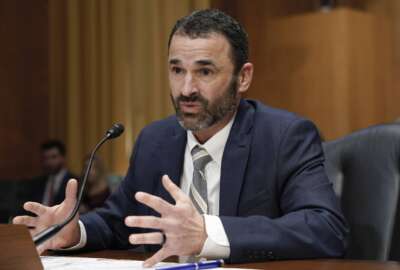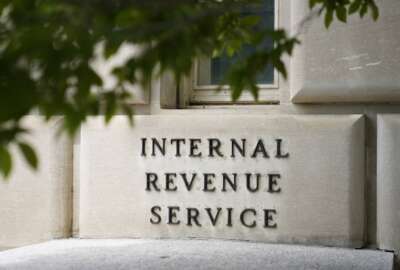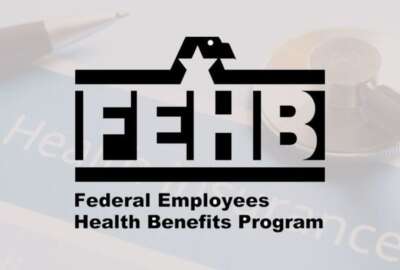Hubbard Radio Washington DC, LLC. All rights reserved. This website is not intended for users located within the European Economic Area.
OPM to test new SES onboarding framework, launch mentoring hub
Office of Personnel Management Director Katherine Archuleta said the goal is to improve the transition of new members to the Senior Executive Service. The frame...
wfedstaff | April 17, 2015 7:44 pm
The White House is restarting its Senior Executive Service reform effort. The Office of Personnel Management will launch several new initiatives in the coming months, including a new SES onboarding framework, as part of the Obama administration’s second term management agenda.
“We are working to strengthen the onboarding program for our new SES members,” said OPM Director Katherine Archuleta at the recent Association for Talent Development Government Workforce conference in Washington. “We will launch an SES onboarding website. We want to make sure our new leaders are supported from the day they start their assignments and that we continue that guidance as they progress. One of the things that was so clear to me as I talked with the President’s Leadership Workshop was that they said as soon as they become SES members, they felt abandoned. They had worked up to this important part of their career and as soon as that happened, it was like they’d be dropped off and they didn’t know the way.”
Along with the new framework, Archuleta announced a new SES mentoring hub, which includes a section on situational mentoring and an interagency coaching network.
“We want our SES to use the hub to find members of government everywhere. We want the agencies to use it to share best practices and available resources,” she said.
Hit the ground running
Mark Reinhold, OPM’s associate director for employee services, said several agencies, including OPM and the departments of Interior, Health and Human Services and Homeland Security, will test out the onboarding framework over the next year.
“What it’s really all about is making sure we have a systematic way of ensuring that our new executives are onboarded, that they can hit the ground running, that they have access to the right people, connections and information to support a smooth transition to the SES,” Reinhold said in an interview with Federal News Radio Thursday. “What we are trying to do is lay out a systematic approach and timeline for the types of things new executives should be exposed to, the types of information that they should be given, the types of discussions, conversations and people they should be meeting. For example, we will lay out the importance of meeting with their supervisors to talk about program objectives and priorities and the importance of meeting with peers and others, the CFO, CIO and HR folks. It’s really all about trying to ensure a consistent onboarding experience and really facilitate someone’s ability to hit the ground running.”
This isn’t the first time OPM has tried to address SES onboarding. The agency initially published an SES onboarding framework in November 2011, which included an orientation plan and a list of tasks, activities and milestones to improve the onboarding experience.
The initial SES onboarding effort was a part of the Obama administration effort to improve the SES program in May 2010. The President’s Management Council (PMC) launched a collaborative, cross-agency initiative to strengthen the SES corps, according to a February 2011 memo from OPM and the Office of Management and Budget.
But the President’s Leadership Workshop, which is made up of 20 SES members who participated in a six-month program reviewing agency management challenges, found SESers still struggled as they transitioned into their new roles.
In fact, a July 2013 report by the Partnership for Public Service and McKinsey & Company found inconsistencies among agencies in how they recruit and develop their SESers. That lack of standardized leadership development is causing some to question whether senior executives will be prepared to replace long-time managers.
Since that joint OPM-OMB memo, there has been little public mention of changes to the SES program, and seemingly little progress.
More specificity, more value
But whether or not the problems are real or perceived, OPM is trying to kick-start the SES improvement program with these initiatives.
“The President’s Leadership Workshop are a bunch of folks who were able to give us some good insights into best practices, and the best time frame for some of these activities to occur,” Reinhold said. “We are excited about reframing this in a way that provides a higher level of specificity and hopefully higher value.”
He said OPM will assess the pilots, make improvements and roll it out more broadly to the government in 2016 or later.
Reinhold also said OPM has developed measures to determine the onboarding program’s success. He said the onboarding website will be available in October, and will provide new members tools and resources, including core training.
“It’s really all about creating kind of a central place where executives can go to get this type of information and to create some economies, so agencies that may not be able to invest as much time in SES onboarding as they might like will have a fall back place to go for some great onboarding information for their executives,” he said. “Another piece of this is our situational mentoring program for SES. Situational mentoring is really about having the ability to have short term discussions between executives on high-impact issues or particular problems, challenges or opportunities. Those exchanges can take place via the telephone, via email, over lunch, etc. This is really to enhance or support individual development and development of leadership competences, but also to provide assistance in tackling real life challenges. We are looking forward to launching this month.”
Reinhold said new SESers will have access to a database of experienced executives who may serve as their mentors. He said OPM is currently recruiting mentors who want to participate.
GovU is coming
Along with the SES onboarding and website, OPM is also in the early stages of building on the success of its HR University with a new concept called GovU.
Reinhold said the long-term goal of GovU is to take wider advantage of courses and training already available in some agencies.
The model for GovU is an agreement OPM and the Department of Defense signed earlier this year to open the military’s security and intelligence certification training to civilian workers.
Additionally, the cyber community has done a lot of sharing of training across the government. Those two are the first areas that could come under GovU.
“Sharing is key here. We have too few resources for all of us to be doing the same thing in our separate buildings,” Archuleta said. “Each individual agency shouldn’t have to develop its own training program for subjects that pertain to the entire federal workforce. If OPM gives agencies access to education and training for these core subjects, that will help free up precious resources for development programs organized for their employees.”
RELATED STORIES:
OPM’s onboarding framework to ease SES’ new-job jitters
OPM launching federal hiring toolkit, new interactive dashboard to reach cross-agency goals
VA, OPM implement promising practices for next generation of SESers
Copyright © 2024 Federal News Network. All rights reserved. This website is not intended for users located within the European Economic Area.
Jason Miller
Jason Miller is executive editor of Federal News Network and directs news coverage on the people, policy and programs of the federal government.
Follow @jmillerWFED





